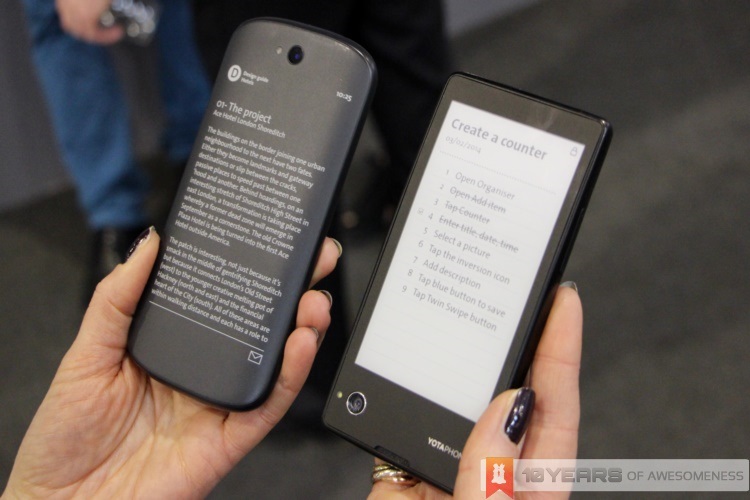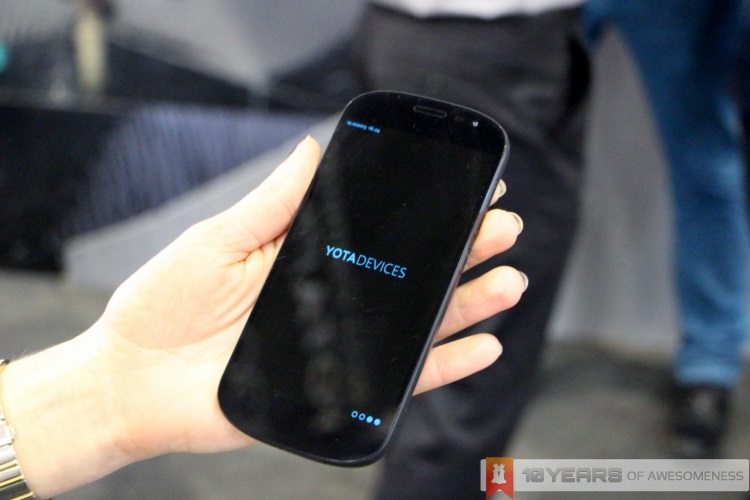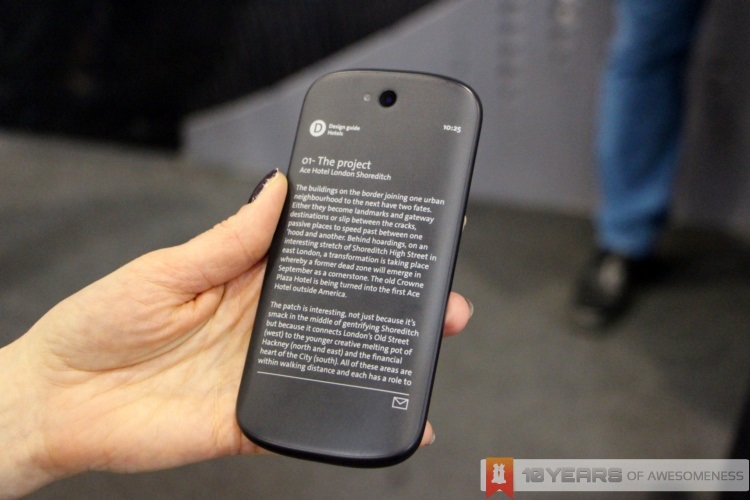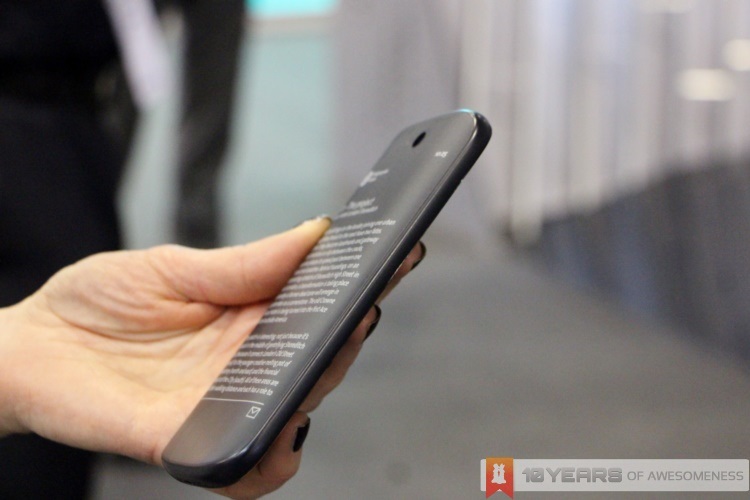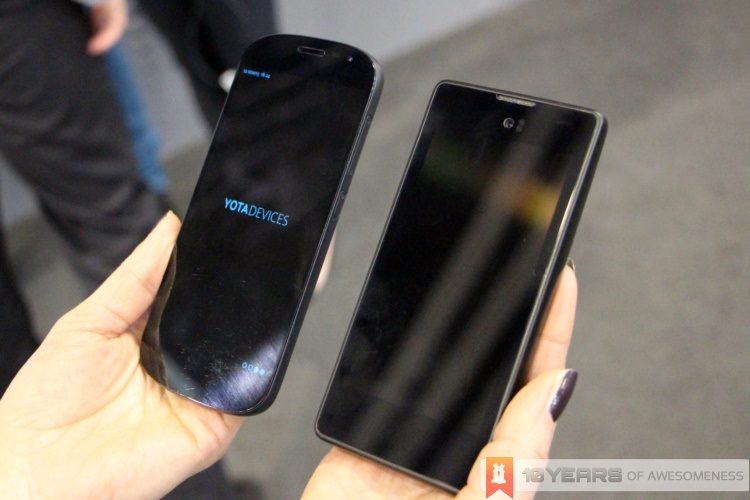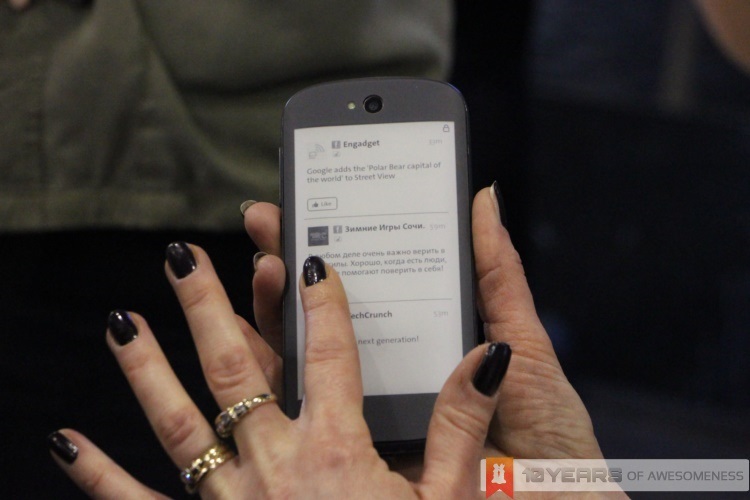
At MWC 2014, Yota Devices almost stole the show from its more mainstream contemporaries with its announcement of the second-generation YotaPhone. With no rumour or leak to speak of prior to MWC, the second-generation YotaPhone proved to be a very, very pleasant surprise with its new touch-enabled e-ink display. The company also took the opportunity to show off its first-generation YotaPhone, which is already on sale in Russia and parts of Europe. Check out a demo of the second-generation YotaPhone as well as a brief hands-on after the jump.

As the company’s new flagship, the second-gen YotaPhone ticks all the right boxes, and adds a new one into the mix. Powered by a Qualcomm Snapdragon 800 processor with 2GB of RAM, a 5-inch Full HD AMOLED display, 32GB onboard storage, 2550mAh battery with wireless charging, LTE connectivity, an 8MP rear camera, the new YotaPhone sports an updated curved 4.7-inch touch-enabled e-ink display. Yup, the new YotaPhone just made the highly unique first-gen YotaPhone look rather boring with its non-touch-enabled e-ink display.
That’s not all, either. This second-generation device curves and bends in all the right places. The Android 4.4-running device’s shape is reminiscent of the LG Nexus 4, but turn it around and it’s a totally different ball game. The back of the second-gen YotaPhone is a matte surface, underneath which is a stunning 4.7-inch 960 x 540 e-ink display that now supports touch input.
The matte surface’s benefit is twofold on the YotaPhone: firstly, it makes the surface much more fingerprint-resistant and improves grip, on top of making the e-ink display perfectly usable under strong sunlight. The second-gen YotaPhone has some nifty space saving design, too: the volume rocker also doubles up as a SIM card tray.
As the demo above shows, the functionality of the secondary display is amazing: you can push your calendar entries onto the secondary display, which does not consume power when it is not refreshed (that is, when the screen changes). You can also customize the display to sport a more personal look: adding wallpapers with support for plenty of widgets, giving the YotaPhone an edge no other smartphone can offer.
Clearly, this is one incredibly desirable smartphone. Unfortunately, we may never see the second-generation YotaPhone in Malaysia. While it is scheduled to only be available in Q4 2014 (while the hardware was breathtaking, the software was…well, not) it is unlikely that we will see the YotaPhone in this side of the world. After all, the first-gen YotaPhone has already been around for several months now, and is only available in its native Russia and select European countries.
Then again, it may not be so for long. At the end of the demo, Yota Devices CEO Vlad Martynov came over to me with a message:
“You tell your Malaysian operators that I want to sell (the) YotaPhone in Malaysia.”
Well…considering the €499 price tag of the original YotaPhone, the device may actually retail for lower than current Android flagships in Malaysia. That is, of course, if anyone is willing to pay a premium price tag for a device with slightly outdated specs. After all, brand loyalty is strong among many Malaysians who are more familiar with the Samsungs and the Apples in the industry.
…Or perhaps the second-gen YotaPhone would change our mindset?
Follow us on Instagram, Facebook, Twitter or Telegram for more updates and breaking news.


